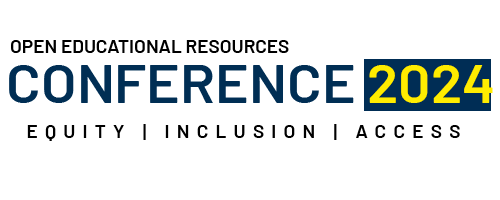Transitioning a Large Core Course Program to OER to Increase Equity at Minority-Serving Institutions
Meeting Link
Start Date
30-3-2021 2:00 PM
End Date
30-3-2021 2:45 PM
Presentation Type
Presentation
Primary Theme
Pedagogy, Andragogy, and Designs
Secondary Theme
Professional Development
Description
In 2018, a study of over 21,000 students at the University of Georgia found that OER improved end-of-course grades and decreased D, F, W grades for all students, particularly the Pell eligible students (Colvard 2018). These findings provided enough persuasive data for one first-year writing program administrator to make the case for a full transition from an expensive, unsatisfying textbook to an OER-based reading and resource schedule as a means to increasing student performance and equity at Texas Woman’s University (TWU), a minority-serving institution where 44% of students are Pell Grant eligible. What came next was an intensive process of reading, vetting, and curating OER appropriate to a diverse range of curricular and instructional needs for a program that annually serves between 2,000 and 2,500 students. Through additional research and careful planning, the facilitator was able to move forward with a fully OER curriculum and to establish professional development sessions for instructors to address new and unanticipated needs that arose from her program’s piloting of OER resources in the previous academic year. In this workshop, the facilitator will use an active learning cycle to guide participants through an initial introduction to her experiences with implementing OER at the programmatic level, before providing activities that prompt personal inquiry and then direct application and goal setting to support current or future adopters of OER with successful implementation in the coming academic year.
Recommended Citation
Hoermann-Elliott, Jackie E., "Transitioning a Large Core Course Program to OER to Increase Equity at Minority-Serving Institutions" (2021). Open Educational Resources Conference. 2.
https://digitalcommons.kean.edu/oer_conference/2021/Schedule_march30/2
Transitioning a Large Core Course Program to OER to Increase Equity at Minority-Serving Institutions
https://kean-edu.zoom.us/j/91279620904
In 2018, a study of over 21,000 students at the University of Georgia found that OER improved end-of-course grades and decreased D, F, W grades for all students, particularly the Pell eligible students (Colvard 2018). These findings provided enough persuasive data for one first-year writing program administrator to make the case for a full transition from an expensive, unsatisfying textbook to an OER-based reading and resource schedule as a means to increasing student performance and equity at Texas Woman’s University (TWU), a minority-serving institution where 44% of students are Pell Grant eligible. What came next was an intensive process of reading, vetting, and curating OER appropriate to a diverse range of curricular and instructional needs for a program that annually serves between 2,000 and 2,500 students. Through additional research and careful planning, the facilitator was able to move forward with a fully OER curriculum and to establish professional development sessions for instructors to address new and unanticipated needs that arose from her program’s piloting of OER resources in the previous academic year. In this workshop, the facilitator will use an active learning cycle to guide participants through an initial introduction to her experiences with implementing OER at the programmatic level, before providing activities that prompt personal inquiry and then direct application and goal setting to support current or future adopters of OER with successful implementation in the coming academic year.


